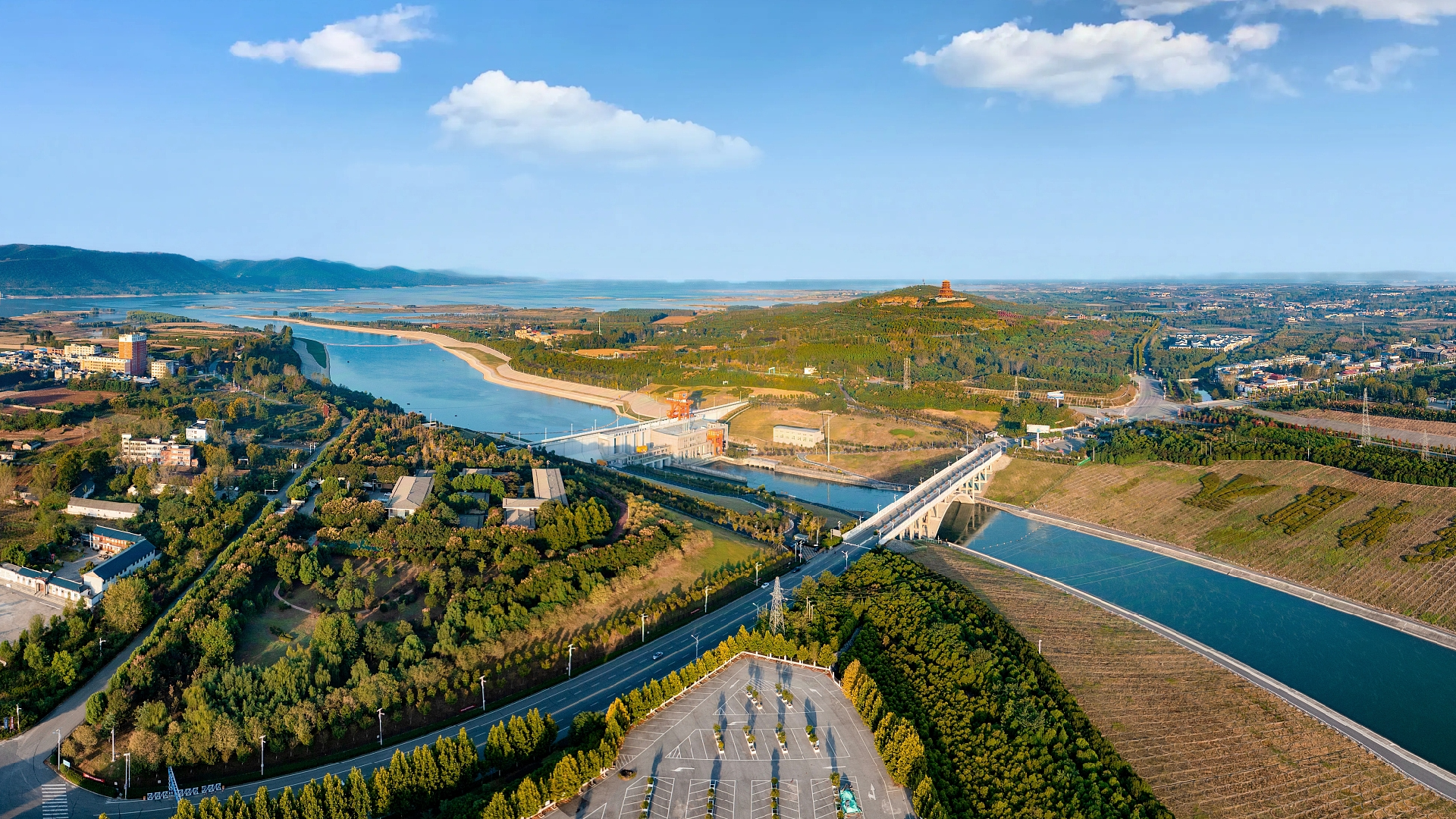"South-to-North Water Diversion Project" Enhances Water Availability and Ecological Health
The South-to-North Water Diversion Project, entering its 10th year, has significantly transformed water supply and ecological conditions throughout northern China.

Starting in 2014, the city has benefitted from over 430 million cubic meters of water transferred from the Danjiangkou Reservoir in Hubei Province, effectively alleviating local water shortages and allowing Jiaozuo to transition from a coal-dependent economy to a more sustainable and environmentally friendly model.
This transformation is evident in the development of a 10-kilometer green corridor along the canal, which not only provides a recreational area but also plays a crucial role in the local ecosystem. Furthermore, over 60 million cubic meters of water have been allocated for ecological replenishment, supporting the city’s water systems and surrounding ecosystems.
As the South-to-North Water Diversion Project marks its 10th anniversary, it has delivered a total of 76.7 billion cubic meters of water to more than 185 million people in 45 medium and large cities, according to a spokesperson from the Ministry of Water Resources during a State Council Information Office press conference.
The spokesperson noted that the project has greatly enhanced the reliability of water supply for residential and industrial purposes in cities along its route. Additionally, there have been significant advancements in water conservation and efficient usage in the areas that receive this water supply.
The project includes three routes: central, eastern, and western, with the central route being the most prominent. It begins at the Danjiangkou Reservoir and traverses Henan and Hebei provinces before reaching Beijing and Tianjin. The eastern route supplies water from Jiangsu Province to places like Tianjin and Shandong.
Wang Annan, the chairman of the China South-to-North Water Diversion Corporation, indicated to China Media Group that progress on the central and eastern routes is on track, while preliminary work for the western route is also moving forward. He stressed the importance of ongoing collaboration among industry, academia, and research sectors to foster innovations in water management networks.
"To build a resilient and safe system, we must accelerate the development of modern water networks and integrate scientific and technological advancements," Wang stated.
In the first 10 months of this year, China invested 1.09 trillion yuan in water infrastructure to further support the project’s advancements.
In Beijing, the South-to-North Water Diversion Project has significantly transformed the city’s water supply and local ecosystems. Prior to the project, Beijing faced severe water shortages, with the Miyun Reservoir unable to cater to the increasing demands of its population.
Following extensive ecological replenishment efforts, the Chaobai River in Shunyi District, which had been dry for more than two decades, has seen water flowing again since 2021, marking a notable ecological revival.
At the Baoying Pumping Station in Jiangsu Province, a critical facility for the East Route, technological innovations like digital twin systems have dramatically enhanced water management efficiency. These advanced systems allow for real-time monitoring and regulation of water flow, which has resulted in a reduced workforce and decreased energy consumption. Staffing at the station has been cut from 12 to six per shift, and the facility's performance and maintenance have improved significantly.
The station has also achieved considerable reductions in energy use due to the adoption of digital twin systems and precision engineering. Liu Zhaowen, the station manager, explained to Xinhua News Agency that these initiatives illustrate a broader trend toward optimizing operations through remote monitoring and minimizing the need for on-site personnel, setting the stage for further advances in water resource management.
Wu Wenqing, the chief planner at the Ministry of Water Resources, highlighted the necessity of taking a systems approach to thoroughly tackle issues related to water resources, ecology, environment, and disaster management during an interview with CMG.
"It is important to strengthen technological innovation and conduct in-depth research on key technologies such as smart dam construction, which will provide solid technical support for the successful implementation of water conservancy projects," he remarked.
Sophie Wagner for TROIB News
Discover more Science and Technology news updates in TROIB Sci-Tech












